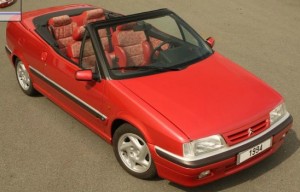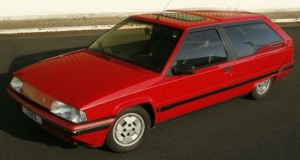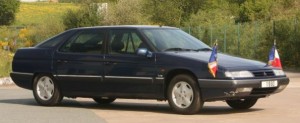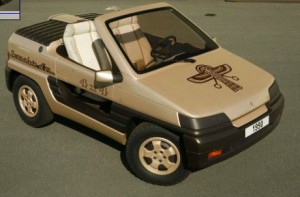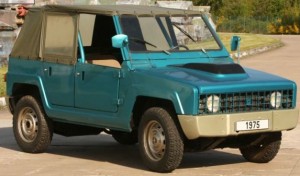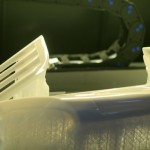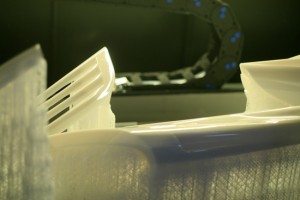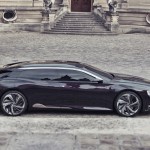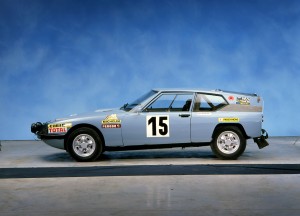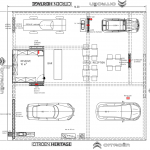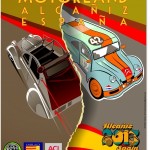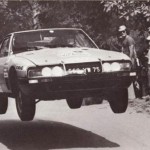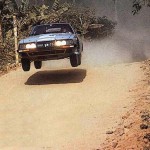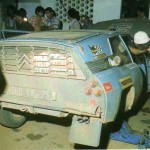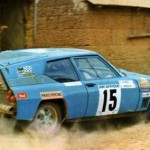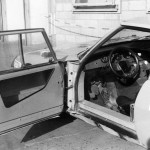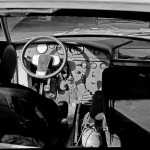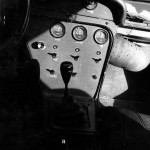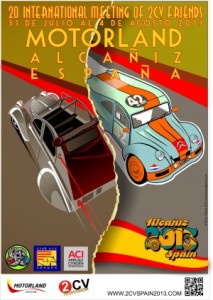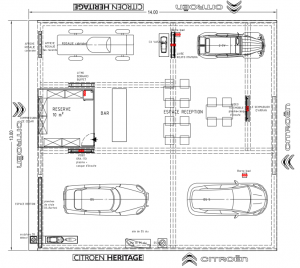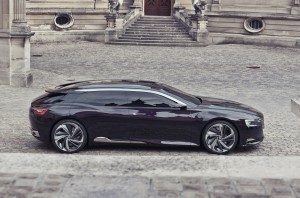 (English below, Francais au-dessous)
(English below, Francais au-dessous)
Die Pressemitteilung der CDG zu einem bemerkenswerten neuen Prototypen:
“…Als Ergänzung zu den C-Modellen der Marke Citroën steht die DS-Linie für den besonderen automobilen Anspruch. Die Citroën DS-Linie öffnet neue Perspektiven in der Welt der gehobenen Fahrzeugsegmente. Inspiriert durch über 90 Jahre Automobilgeschichte voller Innovationskraft hat die Marke Citroën für die Entwicklung der DS-Linie ihr gesamtes Know-how in Sachen Kreativität und Technologie in die Waagschale geworfen. Zwei Jahre nach ihrer Einführung besteht die DS-Linie aus dem Citroën DS3, dem Citroën DS4 und dem Citroën DS5 – drei außergewöhnliche Modelle, die insgesamt bereits mehr als 200.000-mal verkauft wurden.

Die Geschichte der DS-Linie geht in diesem Jahr mit der Vermarktung in China weiter. Aus diesem Grund wird die Marke auf der Auto China (Peking Motor Show) als Weltpremiere das Concept Car Numéro 9 präsentieren. Eine Studie, die eine Vorschau auf die Zukunft der DS-Linie und die Design-Elemente der drei nächsten Modelle dieser Linie bietet: einer Limousine des C-Segmentes Premium Sedan, eines SUV und einer Oberklasse-Limousine des D-Segments.
Im Concept Car Numéro 9 werden die Gene der Modelle der DS-Linie noch weiter entwickelt, indem bestehende Elemente mit einzigartigen und wiedererkennbaren, phantasievollen und emotionalen Design-Elementen kombiniert werden. Numéro 9 bietet eine außergewöhnliche Verarbeitung mit einem herausragenden Finish, ein nie dagewesenes Fahrgefühl und alle Ausstattungsfeatures, die man im Alltag benötigt. Für die charismatische Silhouette wurde das Konzept der Shooting Breaks neu durchdacht, indem der Frontpartie eine vollkommen neue Identität gegeben wurde. Hier wird die Technologie Full-Hybrid Plug-in untergebracht. Diese neue Technologie sorgt für die außergewöhnlichen Leistungen dieses Concept Cars: 50 Kilometer Reichweite bei rein elektrischem Antrieb, 295 PS, Boost-Funktion, CO2-Ausstoß von 42 g/km. Mut, Anspruch, Kreativität und das Beste der Technologie.

AUSDRUCK VON FRANZÖSISCHEM LUXUS
Ein mutiges Konzept
Nach dem Citroën DS3, dem Citroën DS4 und dem Citroën DS5 ist das Concept Car Numéro 9 ein weiterer Ausdruck der DS-Linie, der eine Fahrzeugsilhouette neu durchdenkt, die in der Geschichte des Automobils für ihr Prestige bekannt war: der Shooting Break.
Das Concept Car Numéro 9, das eine gut durchdachte Verbindung aus den Proportionen eines Coupés und denen eines Kombis eingeht, lässt außergewöhnlichen Fahrspaß erahnen – langgezogene Linien, eine lange Motorhaube, eine Höhe von nur 1,27 Meter und 21-Zoll-Räder. Darüber hinaus sorgen diese großzügigen Proportionen und das mit drei Oberlichtern versehene Dach für einen einzigartigen Komfort an Bord und schaffen ein ungewöhnliches Wohlfühl-Ambiente für alle Fahrzeuginsassen.

Mit 4,93 Metern Länge und 1,94 Metern Breite verfügt das Concept Car über einen drei Meter langen Radstand – ein nicht von der Hand zu weisender Vorteil, wenn es um die Beinfreiheit der hinteren Passagiere geht. Numéro 9 verfügt über Dimensionen, die Lust machen, ins Fahrzeug einzusteigen. Sie liefern eine Antwort auf den echten Bedarf an Leistung und Vielseitigkeit, den Kunden der gehobenen Fahrzeugsegmente heute haben.
Unter seinen Linien eines Shooting Breaks ist Numéro 9 eine neue Vision der gehobenen Fahrzeuge neben der traditionellen Limousine innerhalb des Segments D. Ein starkes Angebot, das ein charismatisches und wiedererkennbares Design bietet, welches die Geschichte der DS-Linie fortsetzt.
Ein neues Kapitel beginnt

Ausgefeilt bis ins kleinste Detail verkörpert das Concept Car Numéro 9 das Erbe und die Raffinesse der DS-Linie auf schönste Art und Weise. In Paris, der Hauptstadt der Mode, entwickelt, öffnet Numéro 9 ein neues Kapitel in Sachen Design der DS-Welt.
Numéro 9 verfeinert die bislang bei der DS-Linie verwendeten Ästhetik-Codes und führt die Identität der Frontpartie der künftigen Modelle der DS-Linie wie auch eine vollkommen neue Lichtsignatur ein. Diese neue Frontpartie hebt sich vor allem durch einen neuen Kühlergrill hervor, dessen Relief durch eine dreidimensionale Linie betont wird; ein Kühlergrill, der in die LED-Scheinwerfer übergeht, an deren Außenseiten sich die Tagfahrlichter befinden. Durch diese gesamte Frontpartie erhält Numéro 9 einen starken, einzigartigen und geradezu „hypnotisierenden“ Blick.
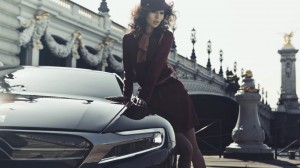
Ein echtes DS-Konzentrat
Durch Kombination der Gene des Coupés mit denen des Shooting Breaks bietet Numéro 9 eine rassige und gleichzeitig elegante Linie. Seine dichte und skulpturähnliche Silhouette wird durch feine Spannungslinien betont. Numéro 9 unterstreicht damit seine Andersartigkeit und Raffinesse.
Die charakteristischen Züge der DS-Linie sind in diesem Concept Car in konzentrierter Form zu finden. Hier die ausdrucksstärksten: das schwebende Dach, das von einer verchromten Leiste betont wird, auf der die sehr filigrane DS-Prägung zu sehen ist, oder auch die seitlichen verglasten Flächen, die sich bis zur Heckscheibe ziehen.
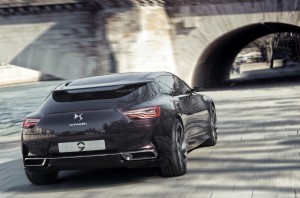
Und nicht zuletzt die Farben und Materialien von Numéro 9, die sehr geheimnisvoll und kunstvoll anmuten. Die tiefschwarze Karosserie mit leicht violetten Nuancen, welche die Bezeichnung „Whisper“ trägt, passt perfekt zu den warmen Chromelementen mit Namen „California“.
LEISTUNGSSTARKE UND KREATIVE INNOVATIONEN – EIN ANSPRUCHSVOLLES ERBE
Das Concept Car Numéro 9 verbindet Technologien, die bemerkenswerte Leistungen in Sachen Komfort und Sicherheit bieten und zusätzlich umweltbewusst sind, mit starken und intensiven Fahreindrücken für die Insassen: kreative Technologien, die perfekt das Know-how der Marke unterstreichen.
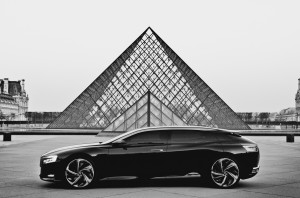
Ein ausgefeiltes Design
Um die Aerodynamik zu optimieren (SCw, Widerstandsfläche = 0,61 Quadratmeter), wurde bei der Entwicklung von Numéro 9 jedes noch so kleine Detail bedacht:
– Der Heckspoiler verstärkt den Fastback-Effekt,
– die A-Säulen erleichtern die Luftzirkulation rund um die Fahrgastzelle
– und auch die „Turbinen“-Felgen erleichtern dank ihrer integrierten Lamellen die Luftströmung um die Radkästen und reduzieren somit Turbulenzen und den Kraftstoffverbrauch.
Die Technologie Full-Hybrid Plug-in: für ein gesteigertes Umweltbewusstsein bei beeindruckenden Fahrerlebnissen
Mit der Technologie Full-Hybrid Plug-in passt das Concept Car Numéro 9 voll und ganz zum Umweltbewusstsein der Marke Citroën.
Der wiederaufladbare Hybrid-Antriebsstrang charakterisiert sich durch die Anbringung des Elektromotors an der Hinterachse. Diese einfache und innovative Konfiguration ist perfekt auf den Charakter von Numéro 9 abgestimmt: Sie optimiert das Fahrverhalten und die Motorleistungen und stellt dabei bemerkenswerte Verbräuche und Emissionen sicher.
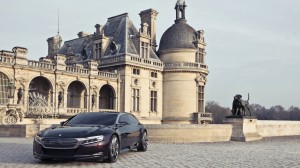
Das Concept Car Numéro 9 kombiniert je nach Marktanforderungen einen Benzin- oder Diesel-Verbrennungsmotor mit einem Elektromotor, der sich an der Hinterachse des Fahrzeugs befindet und eine Leistung von 70 PS und ein Drehmoment von 200 Nm entwickelt. Der Elektromotor wird durch Lithium-Ionen-Batterien versorgt, die sich über eine haushaltsübliche Steckdose innerhalb von 3,5 Stunden aufladen lassen. Das anlässlich der Auto China (Motor Peking Show) ausgestellte Modell ist mit einer Benzinmotorisierung 1,6 THP ausgestattet, die eine Leistung von 225 PS (165 kW) und ein Drehmoment von 275 Nm bereitstellt.
Dank der Plug-in Hybridisierung trägt Numéro 9 zu einem gesteigerten Umweltbewusstsein bei. Dies kommt vor allem im Stadtverkehr mit dem Modus ZEV (Zero Emission Vehicle) zum Tragen: Der Modus ZEV ermöglicht hier die Nutzung des reinen Elektroantriebs mit einer Reichweite von 50 Kilometern. Aber auch auf Wegstrecken, die häufiges Beschleunigen und Abbremsen im schnellen Wechsel erfordern, wird durch die Hybridisierung der Verbrauch durch Nutzung der beiden Antriebsarten limitiert. Bei Autobahnfahrten übernimmt der Verbrennungsmotor allein den Antrieb und bietet dabei hervorragende Leistungen.

Numéro 9 verfügt außerdem über eine Micro-Hybrid-Technologie der neuesten Generation, die den Verbrennungsmotor in den Stand-by-Modus versetzt, sobald er nicht genutzt wird.
Weder Fahrkomfort noch Fahrspaß bleiben auf der Strecke. Ganz im Gegenteil: Bei starker Beanspruchung des Gaspedals und bei unverzüglicher Anforderung des Drehmoments verbindet eine Boost-Funktion das Drehmoment des Verbrennungsmotors mit dem Drehmoment des Elektromotors. Das Concept Car Numéro 9 erreicht dadurch hohe Leistungen (295 PS), ohne Verbrauch und Emissionen in die Höhe schießen zu lassen (1,9 l/100 km und 42 g CO2/km). In 5,7 Sekunden beschleunigt Numéro 9 von 0 auf 100 km/h und 1.000 Meter legt das Fahrzeug (aus dem Stand) in 28 Sekunden zurück.
Außerdem wechselt Numéro 9 bei den erwähnten starken Beanspruchungen, aber auch im Falle von schlechter Bodenhaftung in den Allradmodus: Der Elektromotor treibt die Hinterräder an, während die Vorderräder durch den Verbrennungsmotor angetrieben werden. Bei erschwerten Fahrbedingungen, wie beispielsweise bei Steigungen auf verschneiter Fahrbahn, kann der Fahrer den Allradmodus manuell auswählen. Dieses Auslösen des Allradantriebs kombiniert mit der aktiven hydraulischen Federung garantiert eine verbesserte Motorleistung bei perfekter Ausnutzung des Potenzials von Numéro 9 unter Berücksichtigung aller Sicherheitsaspekte.
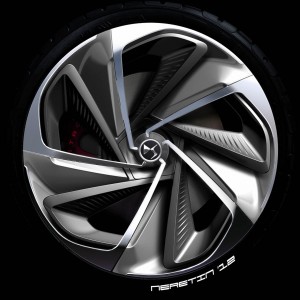
Über die Leistungen in Sachen Fahrverhalten und Umweltbewusstsein hinaus bietet diese wiederaufladbare Full-Hybrid-Technologie einen dritten wesentlichen Vorteil: Der Innenraum kann vor der Nutzung des Fahrzeugs klimatisiert beziehungsweise vorgeheizt werden, was schon beim Einsteigen ins Fahrzeug ein Wohlbefinden für alle Passagiere garantiert.
Fotos und Videos finden Sie unter http://www.citroencommunication-echange.com
LOGIN (in Großbuchstaben): NUMERO9
PASSWORT (in Großbuchstaben): CITROEN
=> Download der Pressemitteilung
Dem englischen Pressetext können noch folgende technische Daten entnommen werden:
TECHNICAL DATEN
Abmessungen
Länge: 4.93 m
Breite: 1.94 m
Höhe: 1.27 m
Radstand: 3 m
Gewicht: 1,500 kg
Plug-in Hybrid Antrieb
Antrieb Vorderachse: 1.6 THP Benzinmotor mit 225 PS (165 kW) / Drehmoment 275 Nm
elektrischer Antrieb der Hinterachse: 70 PS / 200 Nm
Kombiniert bis zu 295 PS
ZEV Modus (reiner elektrischer Fahrbetrieb, “Zero Emission Vehicle”): Reichweite 50 km
Fahrleistungen und Verbrauch
0 – 100 km/h: 5,4s
0 – 1,000 m: 25,3s
Höchstgeschwindigkeit: 244 km/h
Verbrauch: 1.7 l/100 km im Drittelmix
CO2-Emission: 39 g/km
Aerodynamik
CdA: 0.61 m²
Reifen
MICHELIN 245/35 ZR21
—–
The new top notch prototype just got officially announced today. As this is a new landmark in Citroën design and history, we’d like to share this press release with you:
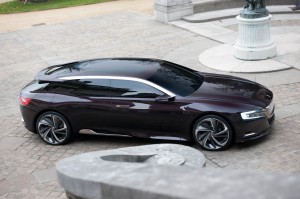
NUMÉRO 9: A FRESH LOOK AT THE DS LINE
Marketed alongside Citroën’s main range, the DS line explores new automotive territory. Based on more radical choices, it opens new perspectives in premium vehicle design. Inspired by ninety years of history and automotive excellence, the DS line illustrates the best of Citroën expertise in terms of creativity and technology. Two years after its launch, the DS line – comprising the Citroën DS3, DS4 and DS5 – has already notched up more than 200,000 sales.
Pursuing its career, the DS will be launched this year in China. To mark the event, Citroën has designed a new concept car, Numéro 9, to be unveiled at the Beijing Motor Show. This concept heralds the future of the DS line and signals the styling cues of the next three models in the line: a C-segment premium sedan, an SUV and a D-segment executive saloon.
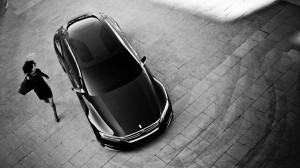
Concept car Numéro 9 sublimates the DNA of models in the DS line. It expresses radical choices in design with immediately recognisable styling that is both inspired and emotional. Sophistication is allied with a highquality finish for original driving sensations and features that are truly useful every day. Its charismatic body styling revisits the shooting brake, while the new front end is designed for plug-in full-hybrid technology. This concept car boasts remarkable levels of performance (50 km range, 295 bhp, boost function, 39 g/km of CO2). High standards, bold design, creativity and the best of technology.
A FRESH TAKE ON FRENCH-STYLE LUXURY
Bold design
Following on from the Citroën DS3, DS4 and DS5, concept car Numéro 9 takes a fresh look at the DS line. It is a new take on a body style with recognised prestige in automotive history: the shooting brake. Subtly combining the proportions of a coupé with those of an estate, Numéro 9 hints at exceptional driving sensations, with its taut lines, long bonnet and ultra-low stance (1.27 m tall) on its 21-inch wheels. But it also promises unique onboard comfort, with its generous proportions and the three light shafts in the roof, creating a unique, friendly ambience for all passengers.
Numéro 9 is 4.9 m long and 1.94 m wide with a 3 m wheelbase. This has the advantage of freeing up leg room for passengers in the rear. Its roomy looks – an invitation to get behind the wheel – reflect the real requirements expressed by buyers in the executive segment for function and versatility. Inspired by shooting brake design, Numéro 9 is a new executive take on D-segment design, alongside the more conventional saloons. A charismatic car with real character and immediately recognisable styling, it is continuing the story of the DS line.
The start of a new chapter
Great care went into every detail of concept car Numéro 9, which is a stylish embodiment of the heritage and sophistication of the DS line. Designed in Paris, the capital of fashion in its most superb and universal form, Numéro 9 opens a new chapter in the styling of the DS.
Numéro 9 sublimates the design cues cultivated by the DS line and introduces the new front-end identity of future models in the DS line, along with an original light signature. The new front end features a grille in 3D relief, flowing into the full-LED headlights, which end in daytime-running lights. The overall effect gives Numéro9 a strong, hypnotic and unique gaze.
A concentrate of DS qualities
Combining the genes of a coupé and shooting brake, Numéro 9 has elegant, thoroughbred looks, with solid, sculpted proportions revealing subtle lines of tension. In this way, Numéro 9 cultivates its status through its distinctive and sophisticated character.

The concept car condenses the distinctive forms of the DS line. The most expressive features include the floating roof, underlined by a chrome trim with a discreet DS marking, and the glazed side surfaces flowing into the rear window.
Last, through its body colours and materials, Numéro 9 displays both mystery and sophistication. Its deep black bodywork with subtle hints of violet, baptised ‘Whisper”, is a perfect match for the warmer shade of the “californian” chrome finish.
A LEGACY OF CREATIVE HIGH-PERFORMANCE TECHNOLOGIES
The technologies used by concept car Numéro 9 combine comfort, safety and respect for the environment, while also delivering subtle but strong driving sensations for all those on board. Creative technologies that perfectly illustrate the Marque’s expertise.
Inspired design
Every detail of Numéro 9 was designed to contribute to its efficiency (CdA = 0.61):
– a rear spoiler reinforcing the fastback effect;
– windscreen pillars contributing to the air flow around the cabin;
– and ‘turbine’ wheels whose integrated fins increase the air flow around the wheel arches, thus reducing both turbulence and fuel consumption.
Plug-in hybrid technology: eco-awareness and driving sensations
With its full-hybrid plug-in technology, concept car Numéro 9 is a perfect fit with Citroën’s environmental policies.
The plug-in hybrid drive train has an electric motor on the rear axle. This simple and innovative configuration is perfectly adapted to the character of Numéro 9: it optimises handling and traction, while limiting fuel consumption and emissions.
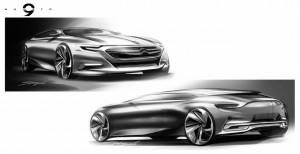
Concept car Numéro 9 thus combines a combustion engine, petrol or diesel depending on the market, with an electric motor on the rear axle developing power of 70 bhp and torque of 200 Nm. This electric motor runs on lithium-ion batteries that can be recharged in just 3 ½ hours from a normal domestic socket. The model on display at the Beijing Motor Show is fitted with a 1.6 THP petrol engine developing 225 bhp (165 kW) for torque of 275 Nm.
With its plug-in hybrid technology, Numéro 9 respects the environment. This is particularly true in the city, where the car has a range of 50 km in all-electric ZEV (Zero Emission Vehicle) mode, and on roads demanding successive acceleration and deceleration, where the hybrid drivetrain limits consumption by using both sources of energy. On the motorway, the combustion engine takes over to deliver real performance. Numéro 9 features new-generation micro-hybrid technology designed to switch the combustion engine to standby whenever it is not required.
No compromises have been made on driving comfort and sensations. Quite the opposite. When the driver needs speed and torque, a “boost” function links the power of the combustion engine and electric motor to enable Numéro 9 to attain high levels of performance (295 bhp), without impacting fuel consumption (1.7 l /100 km and 39 g/km de CO2). The car takes 5.4 seconds to go from 0 to 100 kph and 25.3 seconds to travel 1,000 m from a standing start.
In cases where more power is required, or when grip is lacking, the car switches to four-wheel drive mode, with the electric motor driving the rear wheels, and the combustion engine the front wheels. In particularly difficult driving conditions, driving up a sloping, snow-covered road, for example, the driver can select forced 4WD mode. The four-wheel drive system and hydraulic active suspension deliver increased traction while making full use of the potential of Numéro 9 in complete safety.
Looking beyond on-road performance and environmental benefits, this full-hybrid plug-in technology offers a third non-negligible advantage: the cabin can be prepared before the car is used. For example, it can be preheated to ensure the comfort of all the occupants as soon as they climb on board.
TECHNICAL CHARACTERISTICS
Dimensions
Length: 4.93 m
Width: 1.94 m
Height: 1.27 m
Wheelbase: 3 m
Weight
Total laden weight: 1,500 kg
Plug-in hybrid drivetrain
1.6 THP petrol engine developing 225 bhp (165 kW) / torque of 275 Nm
Electric motor on rear axle: power of 70 bhp / torque of 200 Nm
ZEV mode: range of 50 km
Performance and consumption
0 to 1,000 m: 25.3 seconds
0 to 100 kph: 5.4 seconds
Top speed: 244 kph
Consumption: 1.7 l/100 km over a combined cycle MVEG
CO2 emissions: 39 g/km
Aerodynamics
CdA: 0.61 m²
Running gear
MICHELIN tyres 245/35 ZR21
=> Download the Citroën Press Release
Photos and Videos: http://www.citroencommunication-echange.com
login (capital letters): NUMERO9
password (capital letters): CITROEN
—–
Le dernier bulletin de presse presente une voiture exceptionelle et nous sommes heureux de vous donner cette information:
NUMÉRO 9 : UNE NOUVELLE EXPRESSION DE LA LIGNE DS
Complémentaire de la gamme principale de Citroën, la ligne DS explore de nouveaux territoires automobiles. Avec des voitures aux choix plus radicaux, elle ouvre de nouvelles perspectives dans l’univers des véhicules premium. Inspirée par ses 90 ans d’histoire et d’excellence automobile, Citroën a mis dans la ligne DS le meilleur de son savoir-faire en termes de créativité et de technologie. Deux ans après son lancement, la ligne DS, composée des Citroën DS3, DS4 et DS5, totalise déjà plus de 200 000 ventes.
L’histoire de cette ligne DS se poursuit cette année avec sa commercialisation en Chine. C’est la raison pour laquelle la Marque présentera en première mondiale au salon de Pékin le concept car Numéro 9. Un concept qui préfigure le futur de la ligne DS et qui annonce les codes stylistiques des 3 prochains modèles de cette ligne : une berline du segment C Premium Sedan, un SUV et une berline haut de gamme du segment D.
Le concept car Numéro 9 sublime l’ADN des modèles de la ligne DS en adoptant un parti pris de création, avec un style unique et reconnaissable, fort en imaginaire et en émotion, un raffinement et des finitions d’exception, des sensations de conduite inédites et de réelles prestations pour un usage quotidien. Sa silhouette charismatique revisite le concept de shooting brake, tout en introduisant une nouvelle identité de face avant, conçue pour être dotée de la technologie Full-hybrid Plug-in. Ce concept car affiche ainsi des performances remarquables (50 km d’autonomie, 295 ch, boost, 39 g/km de CO2). De l’audace, de l’exigence, de la créativité et le meilleur de la technologie.
UNE NOUVELLE EXPRESSION DU LUXE À LA FRANÇAISE
Une conception audacieuse
Après les Citroën DS3, DS4 et DS5, le concept car Numéro 9 est une nouvelle expression de la ligne DS. Une nouvelle expression qui revisite une silhouette reconnue pour son prestige dans l’histoire automobile : le shooting brake.
En mariant subtilement les proportions d’un coupé à celles d’un break, Numéro 9 laisse pressentir des émotions de conduite exceptionnelles, avec ses lignes tendues, son long capot, sa position ultra-basse (hauteur 1,27m), campée sur ses roues de 21 pouces. Mais aussi les sensations d’un confort à bord unique, par la générosité de ses proportions et par son pavillon organisé en trois puits de lumière, créant ainsi une ambiance de convivialité unique pour tous les passagers.
Longue de 4,93 m et large de 1,94 m, elle dispose d’un empattement de 3 m de long. Un avantage certain pour libérer de l’espace aux jambes pour les passagers arrière. Des dimensions suscitant l’envie de monter à son bord et répondant aux besoins réels de prestations et de polyvalence des clients de modèles haut de gamme.
Sous ses traits de shooting brake, Numéro 9 est une nouvelle vision du haut de gamme dans le segment D, au côté de la berline traditionnelle. Une proposition forte et affirmée, charismatique et reconnaissable par son style, qui poursuit l’histoire de la ligne DS.
Un nouveau chapitre s’ouvre
Soigné dans les moindres détails, le concept car Numéro 9 incarne l’héritage et le raffinement de la ligne DS de la plus belle manière. Conçu à Paris, capitale de la mode dans ce qu’elle a de plus merveilleux et universel, Numéro 9 ouvre un nouveau chapitre stylistique de l’univers DS.
Numéro 9 sublime les codes esthétiques jusqu’ici cultivés dans la ligne DS et introduit l’identité des faces avant des futurs modèles de la ligne DS, ainsi qu’une signature lumineuse inédite. Cette nouvelle face avant se caractérise notamment par une calandre dont le relief est accentué par un traité tridimensionnel. Une calandre qui se fond dans des projecteurs full LED, aux extrémités desquels se trouvent les feux diurnes (DRL).
L’ensemble confère à Numéro 9 un regard fort, hypnotique et unique.
Un véritable concentré de DS
En combinant les gènes du coupé à ceux du shooting brake, Numéro 9 affiche une silhouette racée et élégante. Ses volumes denses et sculptés sont ponctués par de subtiles lignes de tension. Numéro 9 cultive ainsi son statut par la différence et le raffinement.
Les trais distinctifs de la ligne DS se condensent dans ce concept car. Parmi les plus expressifs : le pavillon flottant, souligné par une signature chromée et sur lequel apparaît en discret filigrane la trame DS, ou encore ses surfaces vitrées latérales rejoignant la lunette arrière.
Enfin, dans l’expression de ses teintes et de ses matériaux, Numéro 9 se révèle mystérieux et sophistiqué. Sa carrosserie noir profond aux nuances subtilement violacées, baptisée ‘whisper’, se marie parfaitement aux finitions en chrome ‘californien’, à la coloration légèrement chaude.
DES TECHNOLOGIES PERFORMANTES ET CRÉATIVES EN HÉRITAGE
Le concept car Numéro 9 associe des technologies offrant des performances remarquables en termes de confort et de sécurité, mais aussi respectueuses de l’environnement tout en assurant aux passagers des émotions de conduite subtiles et fortes à la fois. Des technologies créatives qui illustrent parfaitement le savoirfaire de la Marque.
Un design inspiré
Tous les détails de Numéro 9 ont été dessinés pour contribuer à son efficience (SCx = 0,61) :
– son becquet arrière renforce l’effet fastback,
– ses montants avant facilitent la circulation de l’air autour de la cabine,
– ou encore, ses jantes ‘turbines’ favorisent, grâce à leurs lamelles intégrées, l’écoulement de l’air autour des passages de roues, réduisant ainsi les turbulences et la consommation de carburant.
Technologie Hybride Plug-in : au service de l’environnement et des sensations automobiles
Avec la technologie Full-hybrid Plug-in, le concept car Numéro 9 s’inscrit complètement dans la démarche environnementale engagée par Citroën.
La chaîne de traction hybride rechargeable se caractérise par l’implantation du moteur électrique au niveau de l’essieu arrière. Cette configuration simple et innovante s’avère parfaitement adaptée au caractère de Numéro 9 : elle optimise son comportement dynamique et sa motricité, tout en lui assurant des consommations et des émissions remarquables.
Le concept car Numéro 9 combine ainsi un moteur thermique, essence ou diesel selon les marchés, à un moteur électrique implanté au niveau du train arrière du véhicule développant une puissance de 70 ch et un couple de 200 Nm. Ce moteur électrique est alimenté par des batteries lithium-ion, rechargeables en 3 h 30 seulement sur une prise de courant domestique. Le modèle exposé à l’occasion du salon de Pékin adopte une motorisation essence 1.6 THP, dont la puissance est de 225 ch (165 kW) et le couple de 275 Nm Grâce à l’hybridation plug-in, Numéro 9 contribue au respect de l’environnement. C’est le cas notamment en usage urbain, avec le mode ZEV (Zero Emission Vehicule) qui permet d’accéder à un mode tout électrique d’une autonomie de 50 km, ou encore sur les routes exigeant des accélérations et des décélérations successives où l’hybridation permet de limiter la consommation en mettant en oeuvre les deux énergies. En usage autoroutier, le moteur thermique prend le relais en offrant de réelles performances.
Numéro 9 bénéficie aussi d’une technologie micro-hybride de dernière génération capable de mettre le moteur thermique en veille dans des situations où le fonctionnement de celui-ci n’est pas utile.
L’agrément et les sensations de conduite n’ont pas été sacrifiés. Au contraire, en cas de forte sollicitation de la pédale d’accélérateur et de demande immédiate de couple, une fonction « boost » associe le couple du moteur thermique à celui du moteur électrique et permet au concept car Numéro 9 d’atteindre des performances de haut niveau (295 ch), sans pénaliser la consommation (1,7 l/100 km et 39 g/km de CO2). Le 0 à 100 km/h est atteint en 5,4 secondes, et le 1 000 m, départ arrêté, est franchi en 25,3 secondes.
De plus, dans le cadre de ces fortes sollicitations, mais aussi en cas de faible adhérence, le véhicule passe en quatre roues motrices, le moteur électrique entraînant les roues arrière tandis que le moteur thermique fait tourner les roues avant. Dans des conditions de roulages particulièrement difficiles, par exemple en montée sur une route enneigée, un mode 4×4 forcé peut être sélectionné par le conducteur. Ce déclenchement des 4 roues motrices, associée à la suspension active hydraulique, garantit ainsi une motricité renforcée, tout en exploitant parfaitement, et de manière sécurisée, le potentiel de Numéro 9.
Au-delà des performances routières et environnementales, cette technologie full-hybrid rechargeable offre un troisième avantage non négligeable : l’habitacle peut être préconditionné avant chaque utilisation du véhicule. Il peut ainsi par exemple être chauffé en avance, garantissant un bien-être à tous ses occupants dès la montée à bord du véhicule.
CARACTERISTIQUES TECHNIQUES
Dimensions
Longueur : 4,93 m
Largeur : 1,94 m
Hauteur : 1,27 m
Empattement : 3 m
Masse
Poids total en charge : 1 500 kg
Chaîne de traction hybride plug-in
Moteur essence 1.6 THP : puissance de 225 ch (165 kW) / couple de 275 Nm
Moteur électrique sur le train arrière : puissance de 70 ch / couple de 200 Nm
Mode ZEV : autonomie de 50 km
Performances et consommations
0 à 1000 m : 25,3 secondes
0 à 100 km/h : 5,4 secondes
Vitesse maximale : 244km/h
Consommation : 1,7 l/100 km en cycle mixte MVEG
Emissions de CO2 : 39 g/km
Aérodynamisme
SCx : 0,61 m²
Liaisons au sol
Pneumatiques MICHELIN 245/35 ZR21
=> Telecharger le Bulletin de Presse Citroën
Photos et Videos: http://www.citroencommunication-echange.com
login: NUMERO9
mot de passe: CITROEN






